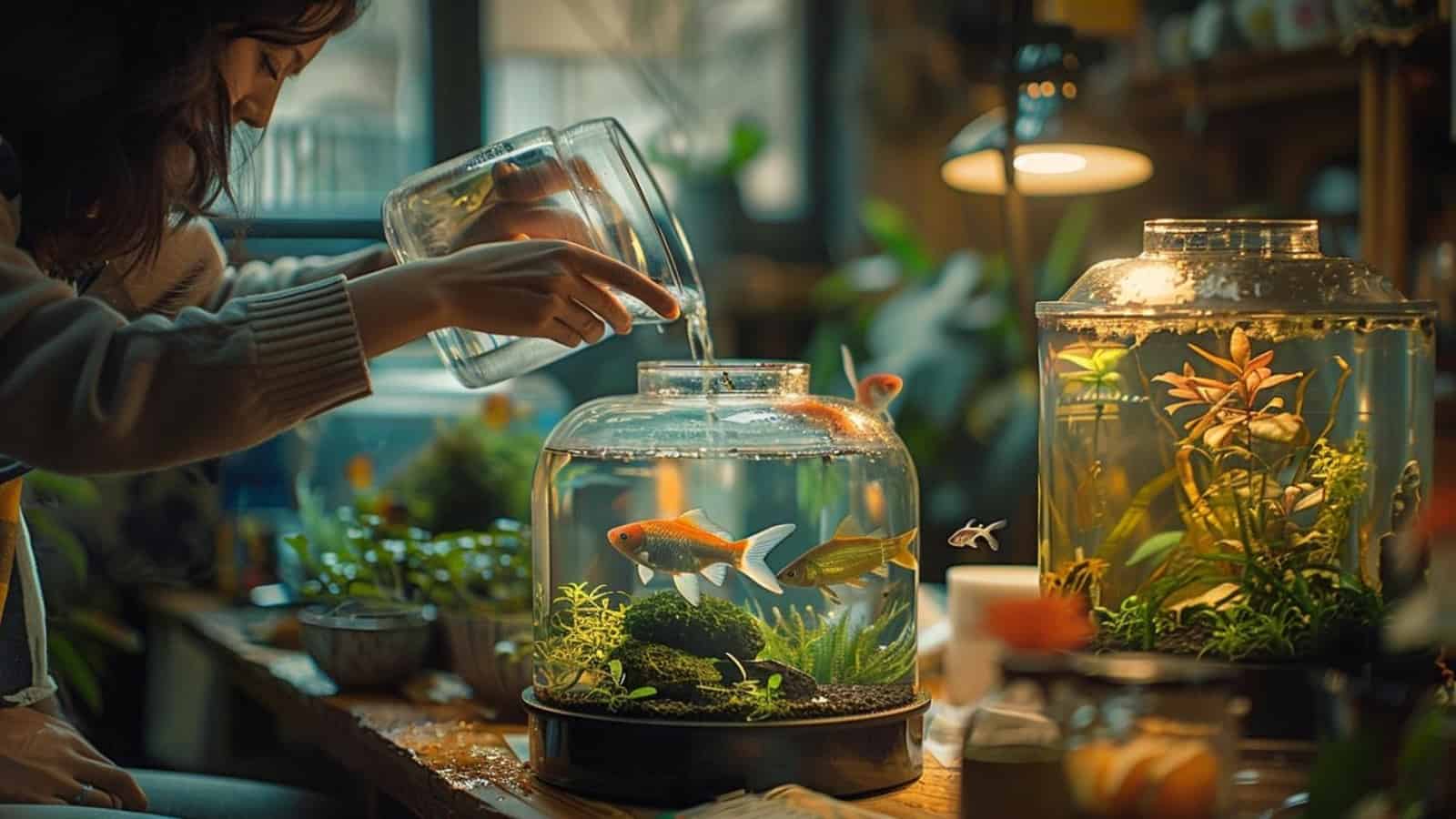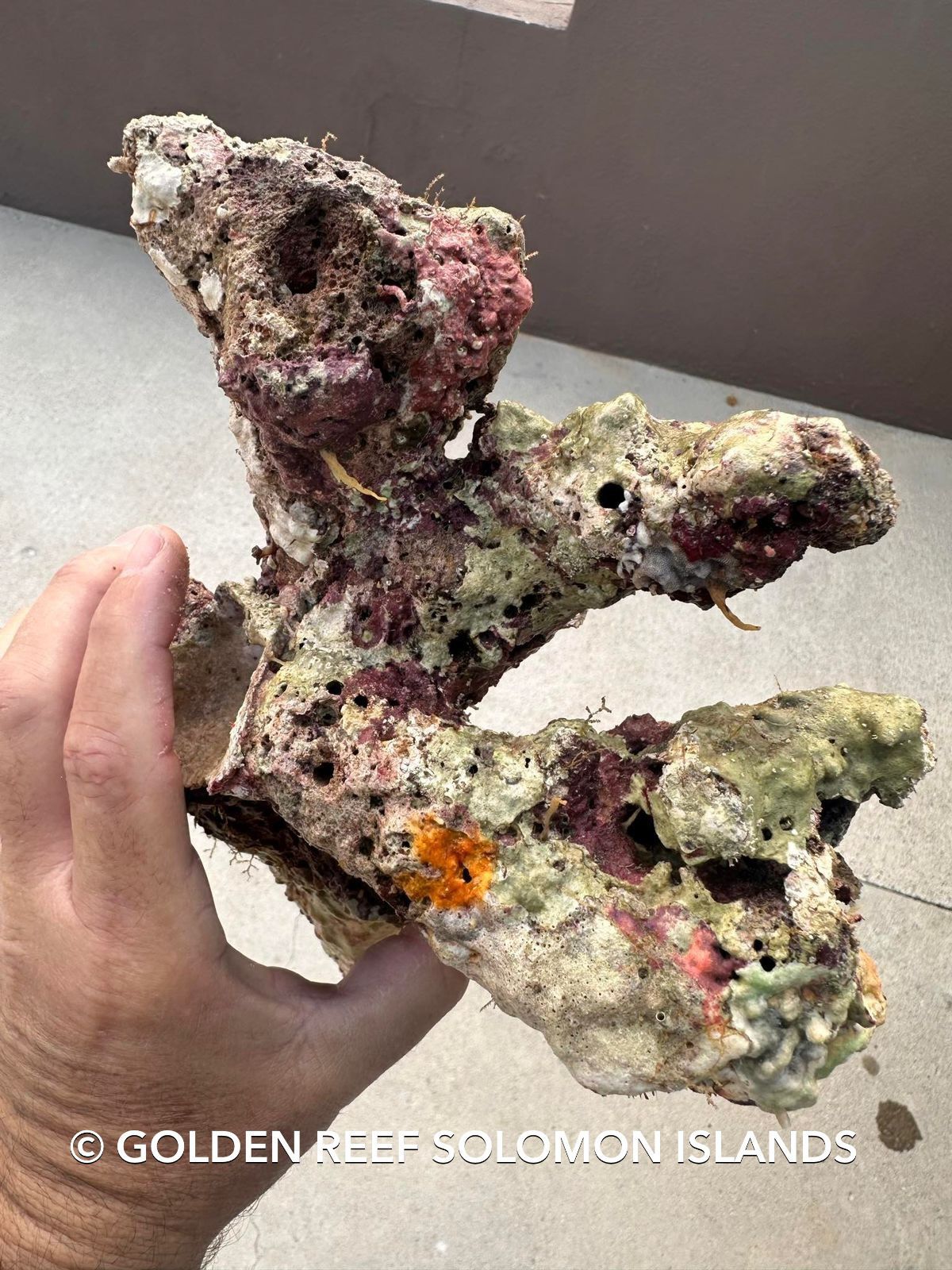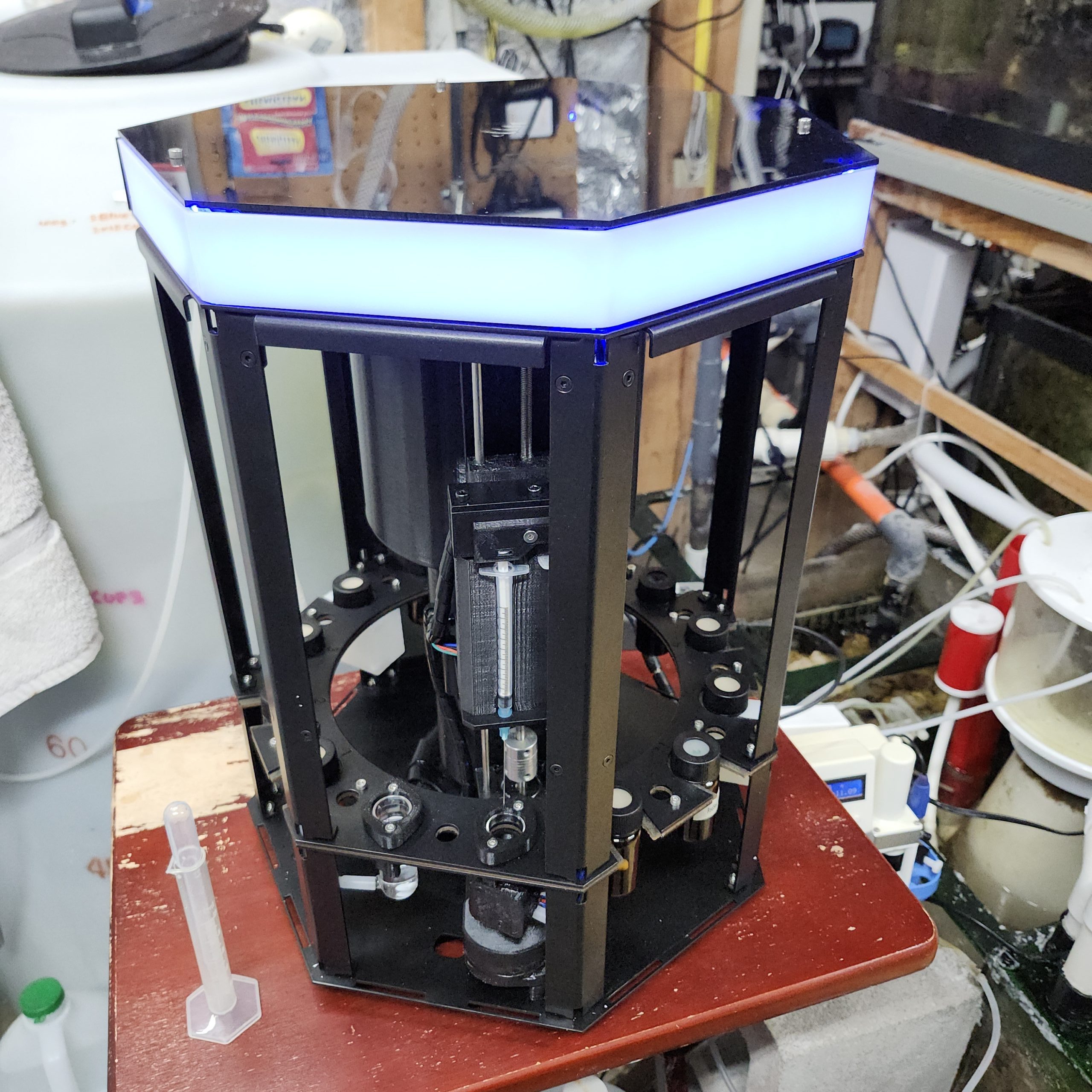Performing partial water changes every week or so is an essential part of your aquarium maintenance routine. But even though keeping your aquarium water in good condition and free from toxins is crucial for good fish health, your fishy friends can get pretty stressed out during the process.
This guide explains how you can make those regular water changes much less stressful for your fish. I’ve also included some helpful tips on how to spot the signs of stress in your fish and what you can do to prevent this potentially serious condition from affecting your pets.
Key Takeaways
- Importance of Gentle Water Changes: Weekly water changes are crucial for maintaining a healthy fish tank but can be stressful for fish. It is essential to handle fish carefully with a soft mesh net, avoid major habitat disruptions whenever possible, and ensure gradual changes in water parameters to minimize fish stress.
- Recognizing Fish Stress: Stress in fish can be indicated by behavioral changes such as increased hiding, reduced appetite, rapid breathing, or erratic swimming. Long-term stress can weaken their immune system, making them susceptible to bacterial diseases and parasite attacks.
- Stress-Reducing Techniques: To reduce stress during water changes, it’s recommended to perform smaller, more frequent changes, use a drip system for gradual water introduction, carefully match water temperatures, acclimate fish properly, and use a water dechlorinator and stress coat additives.
Why Do Water Changes Cause Stress?
Although water changes in your fish tank are essential to keep the water clean and safe for your fish, they can cause stress in fish for several reasons:
Handling Stress
If you need to carry out a major water change, such as when taking down your tank for a deep clean or during a house move, you’ll need to move your fish physically.
Handling your fish is extremely stressful for them and should be done as infrequently as possible. Never try to pick up your fish with your bare hands! That’s seriously going to stress them out and could easily end in an accident.
Trying to scoop the fish up in a cup or jug is also likely to cause stress, especially if numerous attempts are needed to catch the fish.
Instead, use a proper fish net with fine, soft mesh to catch and move your fish. Try to avoid chasing the fish around the tank, as that’s sure to stress them. Be patient and allow the fish to settle, carefully nudging them toward a spot in the aquarium where you can get them safely into your net with minimal fuss.
Habitat Disturbance

When carrying out a water change, you generally need to move tank decorations and disturb the substrate with an aquarium vacuum cleaner to remove fish waste and uneaten food. Although necessary to do a thorough job, all that activity can disrupt the fish’s sense of security and territory.
In addition, some hobbyists like to move their tank ornaments around to provide the fish with a change of scenery and give human onlookers a fresh view of the tank. That’s quite a good idea for fish like bettas, who are territorial and intelligent and need plenty of mental stimulation to keep them happy. However, other fish species can become stressed when their environment suddenly changes or feel exposed without their usual hiding spots. You often get the same effect when you add a new decoration or plants to the tank, so allow a few days for the fish to settle down in their new environment.
Changes in Water Parameters
When you replace some of the tank water during a water change, you alter the chemical composition of the water. Even if you’re diligent about matching the temperature and treating the new water with a dechlorinator, subtle differences in pH, hardness, and other parameters can still occur.
Sudden changes in water parameters will stress your fish, as they are highly sensitive to fluctuations in their environment.
Altered Water Flow and Dissolved Oxygen Levels
When you remove water from the tank and then top it up with fresh water, you can change the water’s flow patterns and oxygen levels. Your fish have adapted to specific conditions, and sudden changes in water flow or dissolved oxygenation levels can stress them.
Take care when replacing your filter system that the outflow doesn’t cause a tidal wave where the water was previously calm. That’s sure to upset your fish, especially those that prefer a slow to moderate current.
Introduction of Contaminants
When adding tap water to your aquarium, always use a dechlorinator product to neutralize the chlorine, chloramine, and heavy metals in the water. If you don’t, you risk poisoning your fish, which will definitely stress them.
What Are the Signs of Stress in Aquarium Fish?

The following are all signs of stress in aquarium fish:
- Increased hiding, reduced appetite, excessive aggression, or lethargy can all indicate stress in fish.
- If the fish spend a lot of their time near the water’s surface, gasp for air, and show rapid or labored breathing, that’s a sign of stress, typically related to poor water quality or insufficient oxygen levels.
- Long-term stress can cause fish to lose their color, appearing faded or pale, while some develop blotches or dark patches.
- Stress often causes behavioral changes in fish, like abnormal swimming patterns, darting erratically, swimming upside down, and spinning around.
- If you’ve left the water change for too long, your fish might rub against objects in the aquarium or scratch themselves against surfaces, due to irritation from water quality issues.
Stress is potentially extremely dangerous for fish because it impacts their immune system, leaving the fish weakened and vulnerable to attack by bacteria and parasites.
How To Make Water Changes Less Stressful for Your Fish?

So, how can you make water changes less of an ordeal for your fish and minimize stress?
Take It Slowly
If you forget to carry out a water change one week or simply don’t get around to doing one until a few weeks later, it’s tempting to change half the water in your aquarium or even more.
That’s not great, as the violent changes in water parameters will stress your fish. In addition, beneficial bacteria colonies develop in established aquariums to help break down fish waste and other organic matter. Large water changes can disrupt these colonies, leading to spikes in harmful substances like ammonia and nitrites until the bacteria can re-establish themselves.
Instead of performing a large water change all at once, I recommend breaking it down into smaller, more frequent ones. This helps keep the water parameters stable, reducing the shock and stress to the fish.
Use Drip Systems
The use of a drip system allows for the very gradual introduction of fresh water into an aquarium, replicating the natural flow of water in streams and rivers. That gradual change avoids rapid fluctuations of water parameters and allows the fish to acclimate more easily to the new water conditions.
Avoid Temperature Shock

Temperature shock in aquarium fish happens when the water temperature in their aquarium fluctuates suddenly and significantly.
All fish species, from humble goldfish to glamorous discus, thrive in specific temperature ranges. When the water temperature deviates from this range, it can cause huge amounts of stress and potentially harm or even kill the fish.
So, how can temperature shock affect your fish?
- Sudden changes in temperature stress fish, weakening their immune systems, leaving them more susceptible to diseases, and causing a general failure to thrive.
- Temperature influences the fish’s metabolic rate. Rapid temperature changes can disrupt their metabolic processes, affecting digestion, respiration, and overall physiological functions.
- The water temperature affects the amount of dissolved oxygen the water contains. Warm water holds less oxygen than cool water, so a sudden temperature increase can reduce oxygen levels, leading to oxygen deprivation in fish, which can be fatal.
- Fish suffering from temperature shock can become lethargic, lose their appetite, or even become agitated or erratic in their behavior.
When carrying out water changes, ensure the temperature of the new water matches the tank temperature. To do that, pre-mix the replacement water and wait until it reaches the same temperature as the aquarium.
Use an accurate aquarium thermometer to double-check the water temperature in the tank before adding it to your tank.
Use Proper Acclimation Practices
If you had to take your fish out of the tank during cleaning and changing some water, don’t simply tip them back into the aquarium! That’s sure to stress your pets. The same applies when adding new fish to your tank.
Float the bag with the fish in the tank for around 20 minutes so that the temperatures have a chance to equalize. Then, gradually add a little bit of aquarium water to the bag over a period of time before releasing the fish into the tank.
Sudden bright lights can stress your fish, so it’s also a good idea to leave the tank lights switched off during acclimation to help reduce stress on the fish.
Watch Out for Signs of Stress!
Throughout the acclimation process, watch your fish closely for changes in behavior that could indicate stress. Signs of stress include rapid breathing, erratic swimming, or loss of coloration. If any signs are observed, slow down the acclimation process.
Dechlorinate Tap Water

Tap water contains chlorine or chloramine, chemicals that are extremely dangerous to fish and other livestock. Exposing your pets to untreated tap water could kill them. Sometimes, tap water also includes heavy metals, which are also dangerous to fish.
So, always use a good-quality water dechlorinator to neutralize these chemicals before adding tap water to your aquarium.
Buffer pH
If your tap water has a significantly different pH to that of your aquarium, you might want to consider using a pH buffer to gradually adjust the pH of the replacement water to match that of the tank.
Stress Coat Additives
Many water conditioners include stress-reducing ingredients like aloe vera or vitamin E, which can also promote the healing of damaged tissue. If you’re concerned that your fish get stressed during water changes, adding one of these conditioners can help.
Final Thoughts
Although water changes are essential to maintain a healthy, safe aquarium environment for your fish and other aquatic pets, the disturbance to the habit during vacuuming can be stressful for them. In addition, water parameters can change, and temperature fluctuations can sometimes occur, both of which will stress your fish.
You can prevent fish stress by using gradual acclimation techniques, always dechlorinating tap water before adding it to the aquarium and adding a water conditioner with a stress coat.




